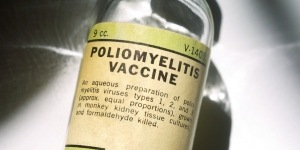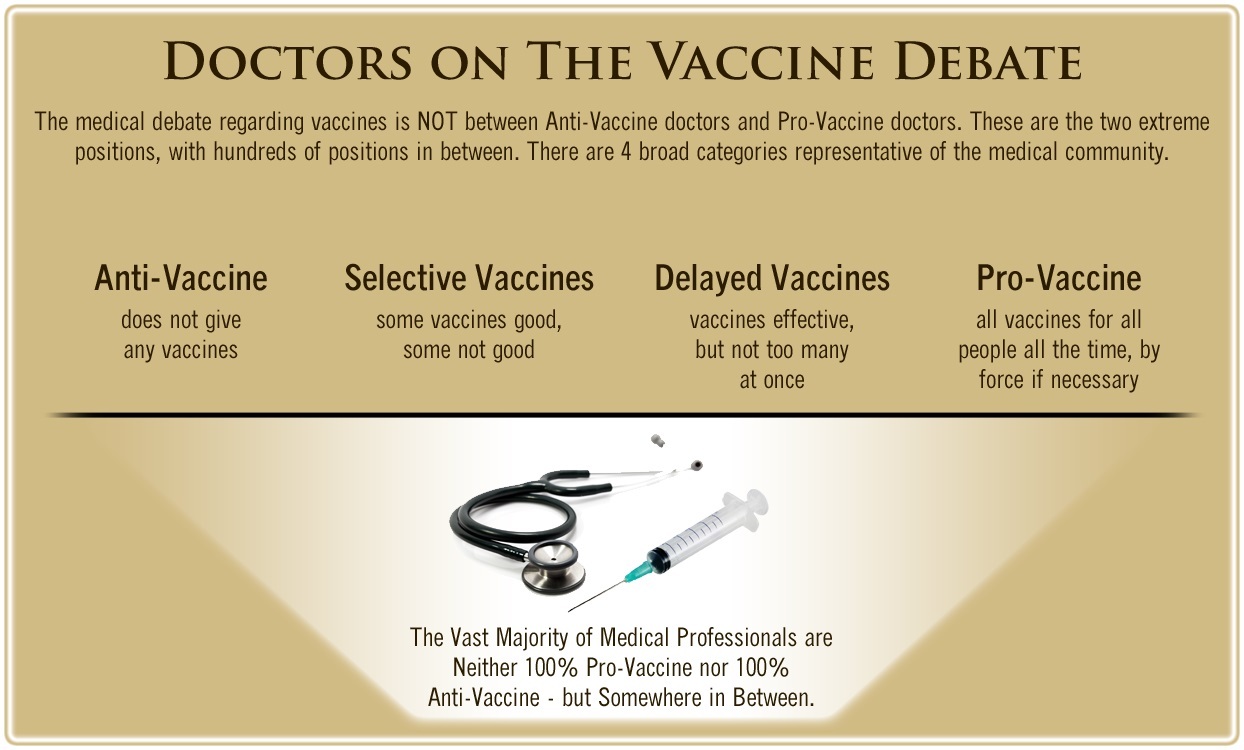
Bottle of poliomyelitis vaccine, close-up. Image source The Vaccine Reaction.
Polio Wasn’t Vanquished, It Was Redefined
by Marco Cáceres
The Vaccine Reaction
Perhaps the most egregious example of clever sleight of hand (… not to mention the outright, blatant rewriting of history) on the part of public health officials in the United States occurred in 1954 when the U.S. government changed the diagnostic criteria for polio.1 It was the year that medical researcher and virologist Jonas Salk produced his inactivated injectable polio vaccine (IPV). The vaccine was licensed in 1955 and began to be used to inoculate millions of children against polio.
The Salk vaccine has been widely hailed as the vanquisher of polio, and it is commonly used as the shining example of how vaccines are the miracle drugs for combating infectious diseases… and now even against diseases that are not infectious. Pick any disease, illness or disorder you want. You got cancer, cholera, peanut allergies, stress, obesity… we’ll develop a vaccine for it.
What the apologists for the Salk vaccine regurgitate from a common script (… some might say scripture) is that before the vaccine was introduced and tested on one million children—the so-called “Polio Pioneers”—in 19542 more than 50,000 people in the U.S. were contracting polio each year, and that by the end of the 1950s the numbers were down to less than 10,000.3 Ergo, the Salk vaccine saved the U.S. from polio. Open and shut case.
Hmm, not so fast.
What is conveniently omitted from this heroic story is that the reason the number of polio cases in the U.S. dropped so precipitously following the mass introduction of the Salk vaccine in 1955 was not medical, but rather administrative. Yes it’s true, in 1952 there were 52,879 reported cases of polio in the U.S. And yes, in 1955 the number went down to 28,985, and by 1959 it had dropped to 8,425.3 But first of all, it’s important to note that the numbers were already declining significantly prior to the initial use of the Salk vaccine. In 1953, there were 35,592 cases of polio in the U.S.3 So there were other things going on in the U.S. at the time totally unrelated to the Salk vaccine.
More importantly, though, in 1954 the U.S. government simply redefined polio. Yes, the government can do that. It does this kind of stuff occasionally in order to help it meet its public policy objectives when it is unable to actually achieve them. How often have you heard of Congress playing smoke and mirrors, gimmicks with the national budget deficit, or on the issue of the unemployment rate? Exactly.
When it comes to government and public policy, the truth is seldom absolute. That’s just the nature of the beast.
According to Dr. Bernard Greenberg, head of the Department of Biostatistics of the University of North Carolina School of Public Health:
In order to qualify for classification as paralytic poliomyelitis, the patient had to exhibit paralytic symptoms for at least 60 days after the onset of the disease. Prior to 1954, the patient had to exhibit paralytic symptoms for only 24 hours. Laboratory confirmation and the presence of residual paralysis were not required. After 1954, residual paralysis was determined 10 to 20 days and again 50 to 70 days after the onset of the disease. This change in definition meant that in 1955 we started reporting a new disease, namely, paralytic poliomyelitis with a longer lasting paralysis.1
As I wrote in my piece “The Salk ‘Miracle’ Myth“…
Under the new definition of polio, thousands of cases which would have previously been counted as polio would no longer be counted as polio. The change in the definition laid the groundwork for creating the impression that the Salk vaccine was effective.4
So as radio broadcaster Paul Harvey used to say for decades at the close of each of his charming commentaries, “And now you know… the rest of the story.”
Read the full article here.
See Also:
Nicholas Gonzalez, M.D. – Scientifically No Polio Vaccine was Needed
Smoke, Mirrors, and the “Disappearance” of Polio
The REAL History Behind the Polio Vaccine
References:
1 James W. Immunization The Reality Behind the Myth. p. 36.
2 About Jonas Salk. The Salk Institute for Biological Studies N.d.
3 The College of Physicians of Philadelphia. U.S. Polio Cases 1952-1962. The History of Vaccines.
4 Cáceres M. The Salk ‘Miracle’ Myth. The Vaccine Reaction June 2, 2015.
Medical Doctors Opposed to Forced Vaccinations – Should Their Views be Silenced?
One of the biggest myths being propagated in the compliant mainstream media today is that doctors are either pro-vaccine or anti-vaccine, and that the anti-vaccine doctors are all “quacks.”
However, nothing could be further from the truth in the vaccine debate. Doctors are not unified at all on their positions regarding “the science” of vaccines, nor are they unified in the position of removing informed consent to a medical procedure like vaccines.
The two most extreme positions are those doctors who are 100% against vaccines and do not administer them at all, and those doctors that believe that ALL vaccines are safe and effective for ALL people, ALL the time, by force if necessary.
Very few doctors fall into either of these two extremist positions, and yet it is the extreme pro-vaccine position that is presented by the U.S. Government and mainstream media as being the dominant position of the medical field.
In between these two extreme views, however, is where the vast majority of doctors practicing today would probably categorize their position. Many doctors who consider themselves “pro-vaccine,” for example, do not believe that every single vaccine is appropriate for every single individual.
Many doctors recommend a “delayed” vaccine schedule for some patients, and not always the recommended one-size-fits-all CDC childhood schedule. Other doctors choose to recommend vaccines based on the actual science and merit of each vaccine, recommending some, while determining that others are not worth the risk for children, such as the suspect seasonal flu shot.
These doctors who do not hold extreme positions would be opposed to government-mandated vaccinations and the removal of all parental exemptions.
In this article, I am going to summarize the many doctors today who do not take the most extremist pro-vaccine position, which is probably not held by very many doctors at all, in spite of what the pharmaceutical industry, the federal government, and the mainstream media would like the public to believe.






Leave a Reply